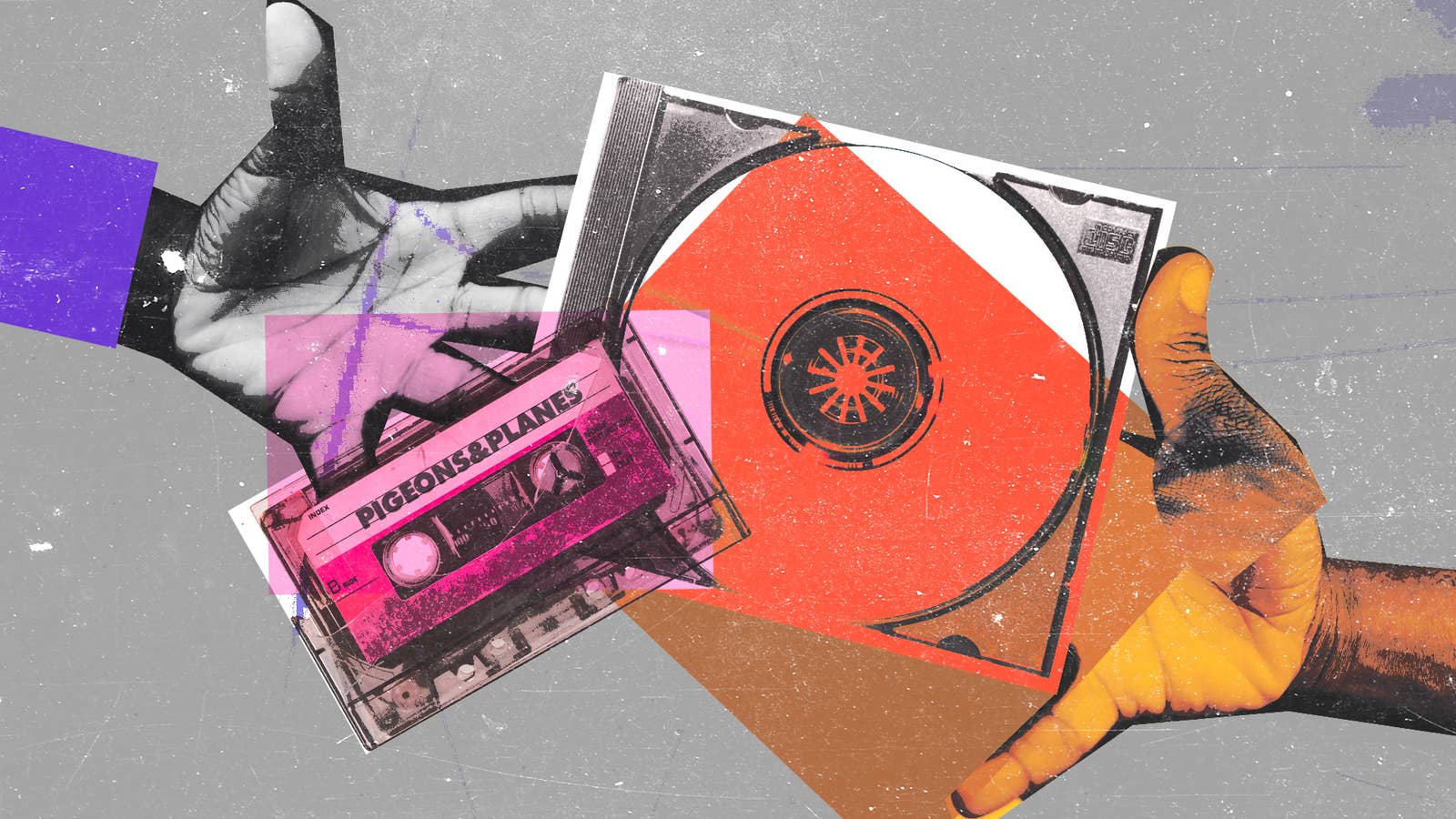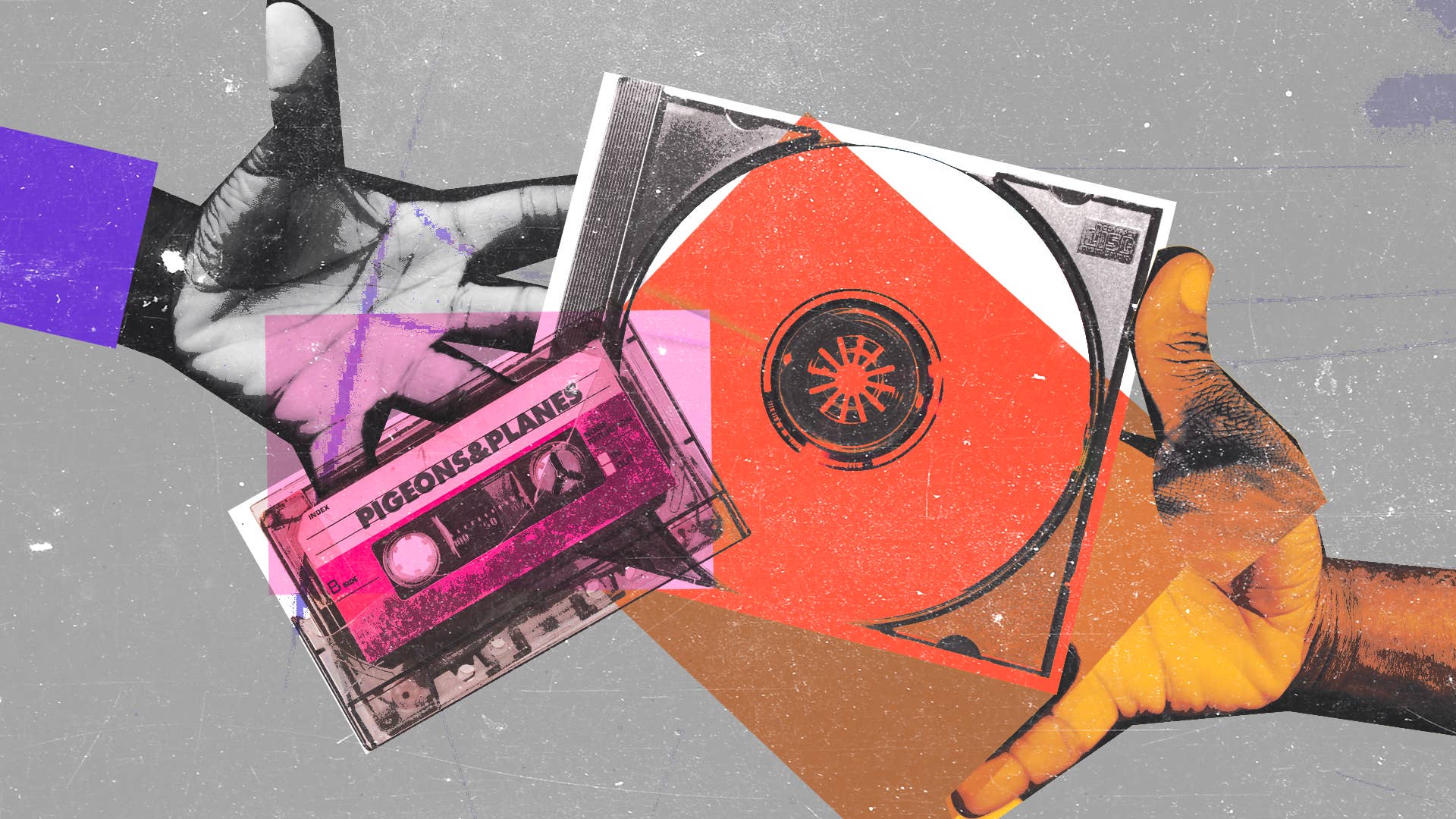
It’s the early 2010s, and things still feel simple. Social media hasn’t taken over our lives, “Super Bass” is still bumping on the radio, YouTube is still the leader in the digital music streaming space, and the idea of a curated digital streaming channel is just starting to form.
Majestic Casual, an editorial music channel founded in 2011 that promotes rising artists by uploading songs with evocative, Tumblr-esque imagery—often of an attractive woman—offered an accessible, curated approach to discovering chillwave electronic music. Live streaming channels, such as College Music or ChilledCow, made a big impression with their lo-fi hip-hop playlists after YouTube allowed live streaming capabilities in 2013 on all channels with over 100 subscribers. Back then, these channel owners dominated the digital streaming world and they were among the first to curate music playlists by genre on YouTube, laying the foundation for the editorial playlist (e.g. Apple Music's New Music Daily, Spotify's Rap Caviar, or Tidal's Rising playlists) as we know it today.
Over the years, the growth was rapid. Majestic Casual boasted almost 2.3 million subscribers in 2015 and the channel now has over 4 million subscribers. College Music, founded in 2014, often garners tens of millions of views on its streams and editorial playlists. And even now, in a music landscape dominated by official DSP playlists with many millions of followers like Spotify’s Rap Caviar, these YouTube playlists retain a loyal following for their simple, emotional approach to music. (The worldwide outrage around YouTube taking down ChilledCow’s much-loved “lo-fi hip-hop radio - beats to study/chill to” livestream this February is a great example of that.)
Despite their popularity, such takedowns have historically been a problem for channels that rely heavily, if not exclusively, on third-party content. From the streams’ anime-inspired visuals to the actual tracks they repost, copyright infringement claims can be filed for almost anything. “Strikes [on YouTube] have been pretty rare but claims are definitely a big issue for music channels nowadays because if you have too many of them, [YouTube] won’t let you monetize your channel,” says Luke Pritchard, co-founder of College Music.
Beyond copyright, YouTube added a new policy in 2018 that made clear the platform would prevent channels from monetizing if they were posting “repetitive” content, even if they obtained commercial rights for use from the content owner. Interestingly enough, College Music co-founders Pritchard and Jonny Laxton noticed that YouTube’s decision seemed to coincide with a major redesign of YouTube Music, the platform’s own streaming service, in 2018. Preventing curation channels from monetizing was easier on long standing channels that are part of YouTube’s Multi-Channel Network, like College Music. But constantly negotiating policies and licensing encouraged the duo to dream bigger with their platform.
“In the last 3 years, we’ve expanded into a record label based on the success of the lo-fi hip-hop streams, I would say,” Laxton says. “It coincided at a point where Luke and I took College Music from a hobby into a full-time venture, so we had more time and could give more to the artist. A record label can add far more value to the artist than a YouTube upload potentially could.”
Pritchard adds: “The next part to that is obviously also being more of a rights holder, as opposed to someone who just uploads third party content. Owning our own content, we can control the claims. When we upload our own label releases, we’re not going to have a claim on our video.”
Providing a platform for up-and-coming musicians remains at the core of Pritchard and Laxton’s motivation, and leveraging their own editorial playlists and livestreams to create a label seems like a viable business venture—an evolution many other YouTube channels have also undergone. Nice Guys, another large YouTube curation channel founded in 2017, has also operated as both a label and reposting platform from the beginning.
“It was just a curation project at first, focused on new indie and alternative artists. We pretty quickly decided to use the audience we created on the channel to champion our own discoveries. That's how it all began,” label manager Mathieu says.
Now, Nice Guys posts third-party and label-owned content interchangeably on their channel, something they can struggle to balance. Mathieu explains: “Hector Gachan, [the first artist we signed] told us that it's weird that we upload content from other people and also from our own artists. We try to make the distinction as obvious as possible of course, but it's true that since it's on the same platform, the confusion is possible.”
In many ways, these channels operate similarly to the massively popular editorial playlists we see on DSPs (digital streaming platforms) today; they have cohesiveness in a common theme or genre, allow for interesting passive listening, and greatly inform how new artists are discovered today. They also form partnerships with artists and promote them equally alongside other up-and-coming musicians. And—maybe most importantly—they’re a rare moment of essential human touch in a world increasingly driven by algorithms.
Even though editorial playlists also exist on YouTube, DSP playlists’ ability to catapult an artist to stardom—helping take tracks from virtually no streams to 26 million plays—have made them a huge component of the music industry today. Kim Hu, a NY-based producer and manager, attributes a large amount of her artists' growth to these playlists. After one of her artists started generating buzz online earlier this year, Hu shared that they landed placements on Spotify’s Anti-Pop and Fresh Finds playlists—resulting in a 34% increase in Spotify monthly listeners over the week and a 69% increase over 28 days. Hu definitely recognizes these playlists’ power in introducing fans to new artists, but she actually doesn’t use DSPs much herself: “Apple Music and Spotify are more analytical, but I genuinely love YouTube and SoundCloud because there’s more opportunities to find independent artists on there.”
Pritchard and Laxton of College Music also agree with that sentiment, noting that some of their favorite releases have been SoundCloud discoveries with few followers. While DSP playlists are great for building artists who already have traction, they can often feel wrapped up in politics and algorithmic bias—relying more on data than human emotion.
“Algorithms are great once a track starts taking off, but it needs that initial kick at the start. And that's often what we help provide. If you upload a track to Spotify for the first time and it gets zero plays, the algorithm is never gonna help it [get on the editorial playlists], and so the algorithm's gonna be not fully competent at discovering the best new music,” Laxton says.
Neo-soul R&B artist Hope Tala feels that authenticity is more powerful than any algorithm. Her first track “Blue,” was featured on Spotify’s Soul ‘n’ the City playlist, and she experienced major growth after her tracks “Lovestained,” “Jealous,” and “D.T.M.” ended up on Spotify’s Pollen playlist last year. Tala didn’t have a lot of traction when she first started getting added to playlists—for her, these breakout placements were a dream: Tala loves Spotify and Apple Music playlists and actually uses them to discover new artists herself. Even though Tala knows firsthand how discouraging the placement process can be—none of her second EP Starry Ache was playlisted after its lead single “Blue”—she believes that remaining true to her work will always pay off in the end.
“My philosophy is always to be really authentic, not stressing too much about when I put the music out, and making sure that the thing that I'm worrying about most is the music. Because ultimately the most important thing is that people are connecting with my music, and for people to be connecting with my music, it has to be as good as it can be,” Tala tells us. “If the music is good, it's gonna reach people.”
Rising Canadian anti-pop artist Nilo Blues who made a name by gaining traction on YouTube, feels similarly to Tala. “Great work will always speak for itself, so when you have platforms like [SoundCloud, YouTube, TikTok, Spotify, Apple Music], the opportunity to tap into new demographics and get people engaged with your work increases dramatically,” he says. “Although it can be saturated at times, the chances of breaking through the noise is much less of a stretch than what it once felt like. It’s a level playing field because of these platforms.”
At the end of the day, it seems like the most successful up-and-coming artists lean heavily into their authenticity—not letting the uncertainty of how to get discovered shake them from committing to their craft. As listeners, we can’t always predict which songs will move us and we won’t always understand the logic behind the tracks that give us goosebumps. Whether it’s dubbing cassette tapes, burning CDs, or organizing iTunes playlists, human connection will always be a vital part of how we share and consume music—and no algorithm will ever take that away.
Listen to the Pigeons & Planes playlist on Spotify or Apple here. It's always hand-picked and human curated—no algorithms involved!
Listen to the Pigeons & Planes playlist on Spotify or Apple here. It's always hand-picked and human curated—no algorithms involved!

